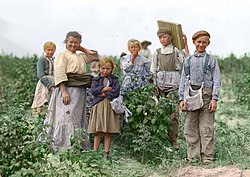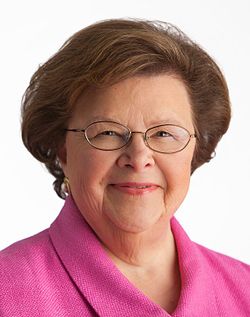History
19th century

The first Polish immigrants to Baltimore settled in the Fell's Point neighborhood in 1868. Polish mass immigration to Baltimore and other U.S. cities first started around 1870, many of whom were fleeing the Franco-Prussian War. [10] Many Polish immigrants came from agricultural regions of Poland and were often considered unskilled workers. Many worked as stevedores for Baltimore's International Longshoremen's Association. Other Polish immigrants worked in the canneries, some travelling to the Gulf Coast of Louisiana and Mississippi to work in the seafood canneries during the winter months. After the abolition of slavery, farmers had lost their slaves and wanted a cheap source of labor. Following changes in U.S. immigration laws many Central and Eastern European migrants, particularly Polish and Czech, came to Maryland to fill this need. These changes also affected other nations. [11]
The majority of Polish immigrants were Roman Catholics. The first Polish-Catholic parish to be formed was the St. Stanislaus Kostka church, which was organized in 1880. The Holy Rosary Church parish was founded in 1887. However, many were Polish Jews. Polish Jews helped found the B'nai Israel Synagogue in 1873. [12]
The first Polish language newspaper in Baltimore, titled Polonia, began publication in 1891. [13]
By 1893, the Polish population was starting to become the backbone of Baltimore's laboring class. 1,500 were arriving in Baltimore annually and by 1893 there were 23,000 Polish-Americans living in the city. [14]
20th century


The St. Casimir Church parish was established in 1902. St. Casimir's current building was constructed in 1927. Less than a year later, Holy Rosary Church built its current residence.
During the early years of the 20th century the Polish population became more established in Baltimore. The Polish community established ethnic clubs, Polish-language newspapers, and create their own savings and loans societies. By 1910, Eastern Avenue in Baltimore was known as the Polish Wall Street of Baltimore. [15]
In the years prior to World War I, the Polish population in Baltimore ranked seventh largest in the United States. [16]
Baltimore's Poles first gained political representation in 1923, when Edward I. Novak was elected to the Baltimore City Council for the city's 3rd ward. [17]
In 1925, the Polish community of Curtis Bay established the Polish Home Hall in order to serve as a community center for the Polish community.
In the census of 1960, Polish-Americans comprised 15.2% of Baltimore's population. The Polish-born was a percentage of the total foreign-born population was 62.6% in Fell's Point, 38.5% in Locust Point, and 74.7% in Southeast Baltimore. [18]
Ze Mean Bean Café in Fell's Point opened in 1995. It is a restaurant which offers Polish cuisine, as well as other Slavic and Eastern European fare. [19]
In 2000, Baltimore's Polish community funded the creation of the National Katyń Memorial at Inner Harbor East. The monument is meant to memorialize the victims of the Katyn massacre.
21st century

The Polish community has declined in numbers over the years, but there is still a strong Polish presence. The Polish National Alliance is located in Baltimore and maintains an archive of several thousand documents in the Polish language. There are a number of Polish delis and restaurants still in operation, such as Krakus Deli, Polock Johnny's, Ostrowski of Bank Street, and Ze Mean Bean Café.
In 2011, Baltimore's long-running Polish festival left Baltimore after 37 years of being held there; the festival was relocated to Lutherville-Timonium. According to The Baltimore Sun, the move was due to the shrinking size of the Polish community in Baltimore. [20] The organizers of the annual Polish festival in Baltimore, The Polish Community Association of Maryland (PCAM), provide an alternate reason for moving the festival out of the city: the city sharply increased fees for space rental and services, and mandated expensive insurance coverages be provided by the organizers. [21]
The National Slavic Museum opened in 2012. The museum focuses on the Slavic history of Baltimore, including Baltimore's Polish history. [22]
The Lemko House, an apartment complex on South Ann Street, provides housing for Eastern European immigrants. Founded in 1983 by Ivan Dornic, an Eastern Rite priest, the complex is named after Dornic's ethnic group, the Lemkos. The Lemkos are a Rusyn ethnic group inhabiting Lemkivshchyna, a part of Transcarpathia that spans parts of Slovakia, Poland, and Ukraine. Lemko House has opened its doors to low-income residents of any ethnicity, but is still home to many Slavic and Eastern European immigrants. [23]

